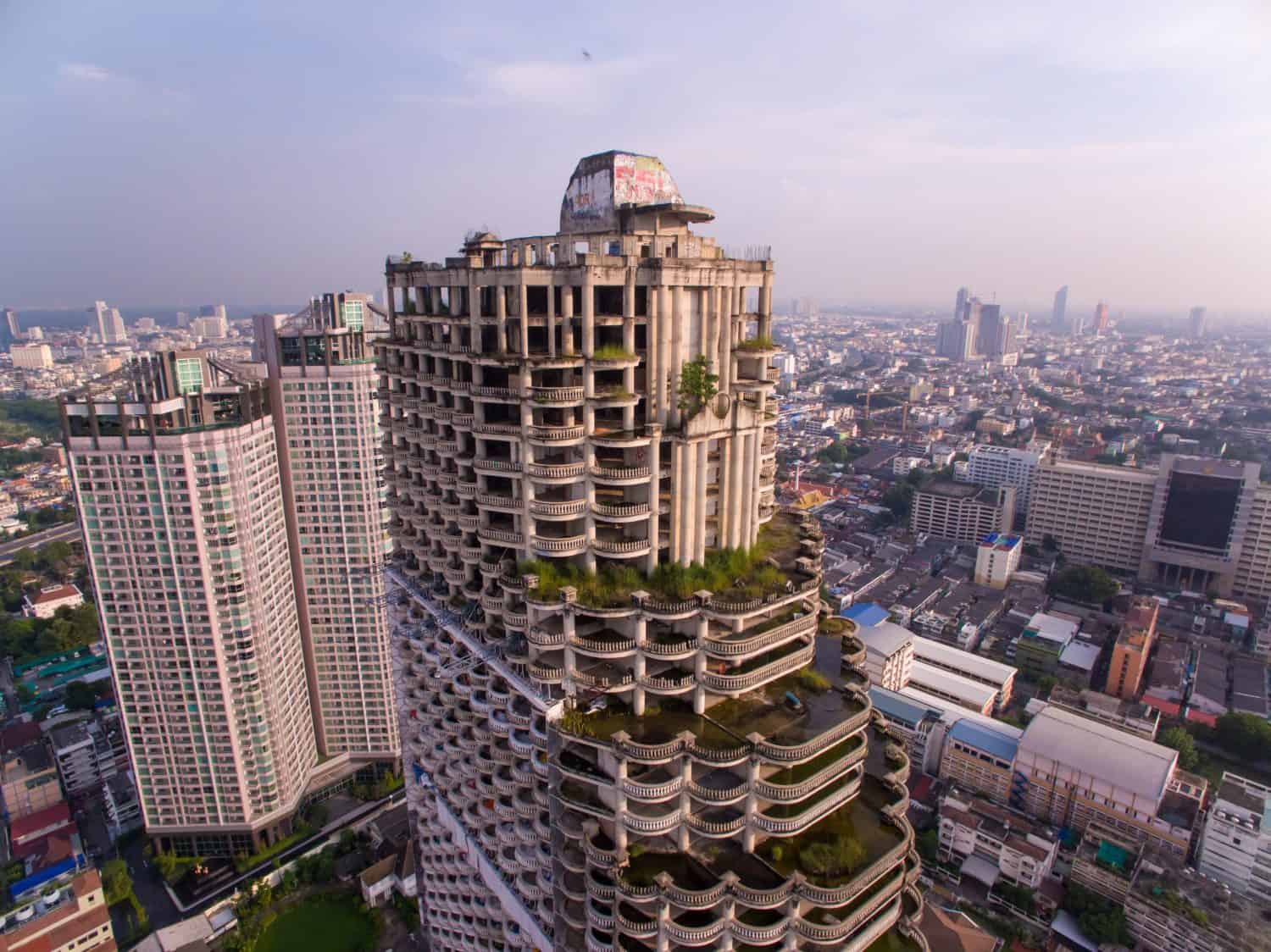These Gargantuan Construction Projects Were Too Big to Finish
People have built some amazing things, but sometimes our architectural ambitions have outpaced our resources or abilities. Scattered across the globe are the skeletal remains of construction projects so massive, so ambitious, that they ultimately proved impossible to complete. This article explores ten of history’s most fascinating gargantuan construction projects that are monuments to pride, […] The post These Gargantuan Construction Projects Were Too Big to Finish appeared first on 24/7 Wall St..

People have built some amazing things, but sometimes our architectural ambitions have outpaced our resources or abilities. Scattered across the globe are the skeletal remains of construction projects so massive, so ambitious, that they ultimately proved impossible to complete. This article explores ten of history’s most fascinating gargantuan construction projects that are monuments to pride, poor planning, or unfortunate circumstances.

Numerous ambitious megaprojects have been abandoned mid-construction due to financial challenges, political shifts, or technical impossibilities, leaving behind massive monuments to human ambition.
Retiring early is possible, and may be easier than you think. Click here now to see if you’re ahead, or behind. (Sponsor)
Key Points
North Korea: Ryugyong Hotel

Pyongyang’s skyline is dominated by a 105-story, pyramid-shaped monstrosity that has haunted the city since 1987. The Ryugyong Hotel was North Korea’s attempt to create the world’s tallest hotel and showcase national prestige. Construction halted in 1992 after the collapse of the Soviet Union eliminated crucial funding. For sixteen years, the concrete skeleton stood empty, without windows or interior fittings, earning the nickname “Hotel of Doom.”
Construction resumed in 2008 when an Egyptian telecommunications company invested in the project, adding a glass exterior. Despite occasional rumors of imminent opening, the hotel remains unfinished and unopened after more than three decades and an estimated $750 million investment. The Ryugyong stands as perhaps the world’s largest architectural white elephant, symbolizing the dangers of national pride overwhelming economic reality.
Spain: Sagrada Família

Not all unfinished megaprojects represent failure. Barcelona’s Sagrada Família basilica has been under construction since 1882, with completion still years away. Antoni Gaudí’s masterpiece was only about 20% complete when the architect died in 1926. Construction has proceeded in fits and starts, interrupted by the Spanish Civil War (when revolutionaries destroyed Gaudí’s original plans) and funding challenges.
Yet unlike most entries on this list, work continues today, funded by millions of tourist visits annually. Current projections target completion around 2026–2028, marking nearly 150 years of construction. While technically “unfinished,” the Sagrada Família demonstrates how architectural ambition can transcend its original timeline, becoming a multi-generational project that evolves with construction techniques and funding realities.
Thailand: Bangkok’s Ghost Tower

Bangkok’s skyline bears the scars of economic catastrophe in the form of abandoned skyscrapers. When the 1997 Asian Financial Crisis struck, Thailand was in the midst of a building boom, with dozens of ambitious towers under construction. As currency values collapsed and investment evaporated, construction sites froze in time.
The most notorious example is the Sathorn Unique Tower, often dubbed the “Ghost Tower.” This 49-story skyscraper was 80% complete before being abandoned in the late 1990s Asian financial crisis. It was originally intended to be a luxury condominium complex. For many years, it was a favorite destination for thrill-seekers and urban explorers who snuck in and enjoyed panoramic views of Bangkok for their troubles. Access is now restricted, but the tower remains a stark monument to arrested ambition.
U.S.: Cincinnati’s Abandoned Subway System

Beneath Cincinnati lies one of America’s strangest infrastructure failures: a 2.2-mile subway system that never carried a single passenger. Approved in 1916 with a budget of $6 million, construction began in 1920 to convert an abandoned canal into an underground rapid transit system. However, post-WWI inflation doubled construction costs, and political squabbling prevented additional funding. By 1927, the city had spent $6 million but completed only a fraction of the planned system. Construction halted with tunnels dug, stations roughed in, but no tracks or electrical systems installed.
Numerous attempts to revive the project failed, and today the tunnels remain intact but unused except for water and utility lines. Cincinnati’s failed subway represents how inflation, political indecision, and changing transportation priorities can doom even well-intentioned infrastructure investments.
China: Ghost Cities

Perhaps no country has produced more massive unfinished projects than 21st-century China. The most striking examples are entire planned cities that stand largely empty years after construction. Ordos Kangbashi in Inner Mongolia became the most famous “ghost city” after developers built housing and infrastructure for one million residents, but only about 100,000 people moved in.
Similar scenes have played out across China, where economic growth metrics incentivized local governments to build cities before demand existed. While some eventually attract populations, others remain eerily empty, with deteriorating infrastructure. These ghost cities represent the largest scale of overbuilding in human history—not technically unfinished, but functionally incomplete without the human activity they were designed for. They demonstrate how centralized planning without market demand can create physical infrastructure that serves no practical purpose.
U.S.: California’s High-Speed Rail

America’s most ambitious current transportation project, California’s High-Speed Rail, exemplifies the challenges facing contemporary megaprojects. Approved by voters in 2008 with a $33 billion budget and 2020 completion date, the project promised to connect Los Angeles and San Francisco with trains traveling at 220 mph. Years later, costs have ballooned to over $128 billion, and even a scaled-back initial segment between Merced and Bakersfield won’t open until 2030 at the earliest.
Land acquisition challenges, litigation, political opposition, and engineering difficulties have all contributed to delays. While construction continues on some segments, the full system as originally envisioned may never be completed. This project demonstrates how modern democratic societies struggle with infrastructure that requires decades of consistent political support and funding across multiple administrations.
The post These Gargantuan Construction Projects Were Too Big to Finish appeared first on 24/7 Wall St..








































































































































































